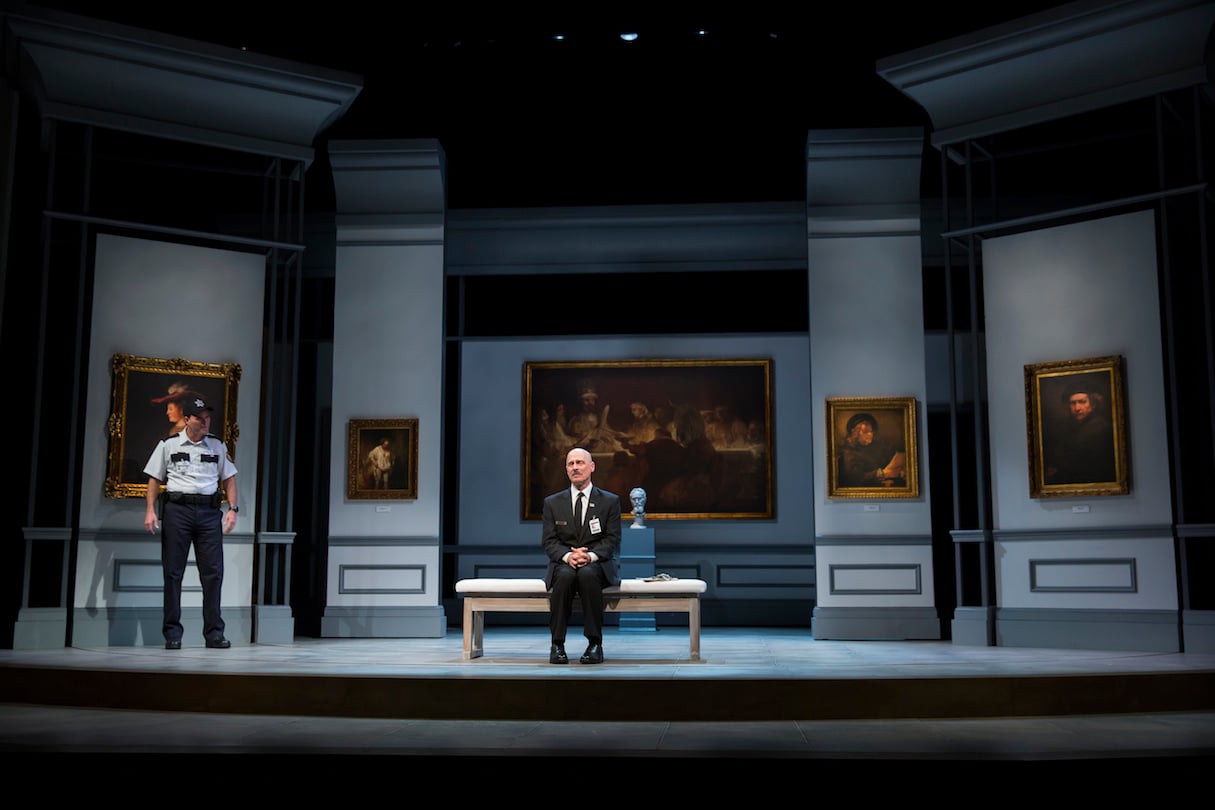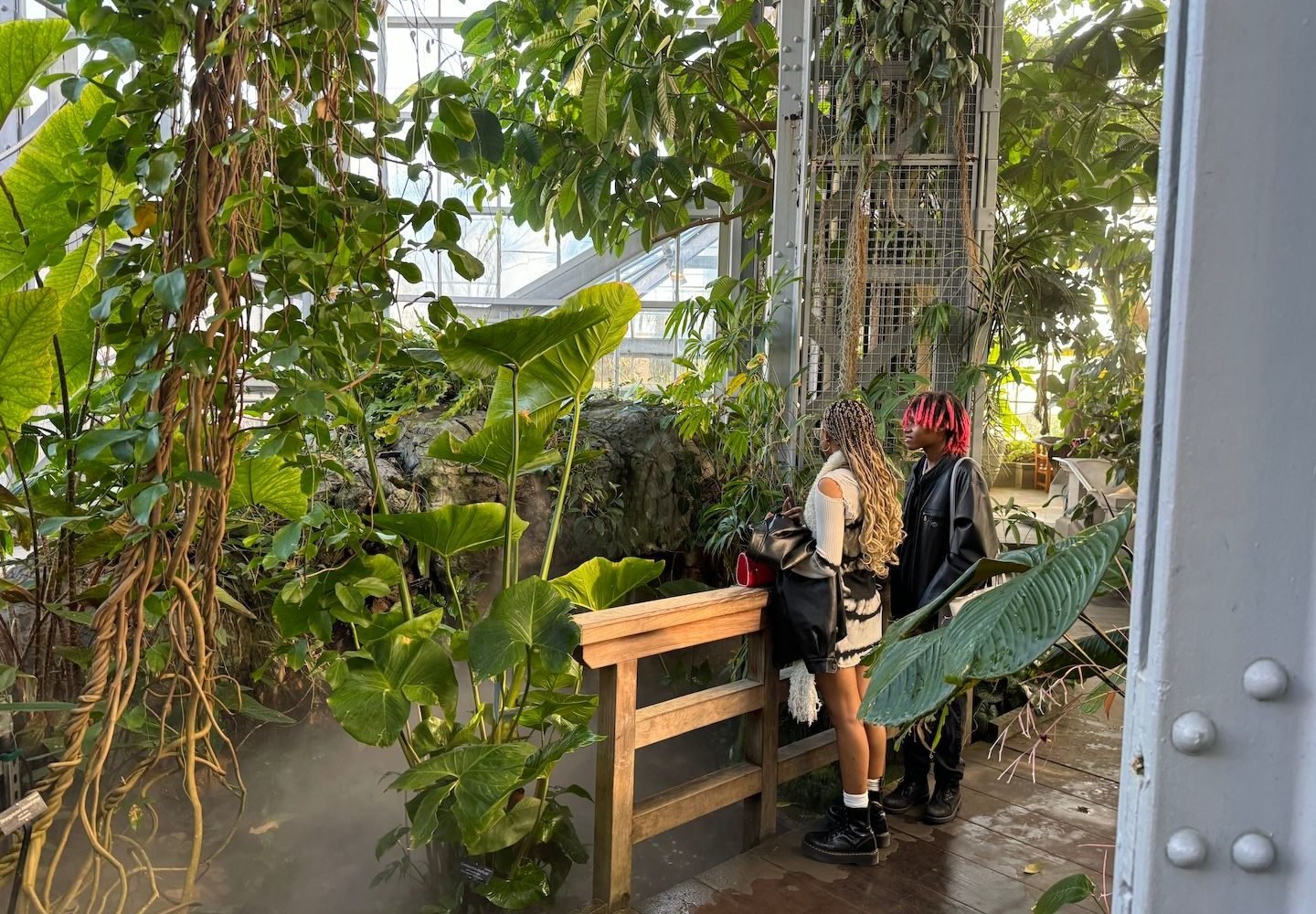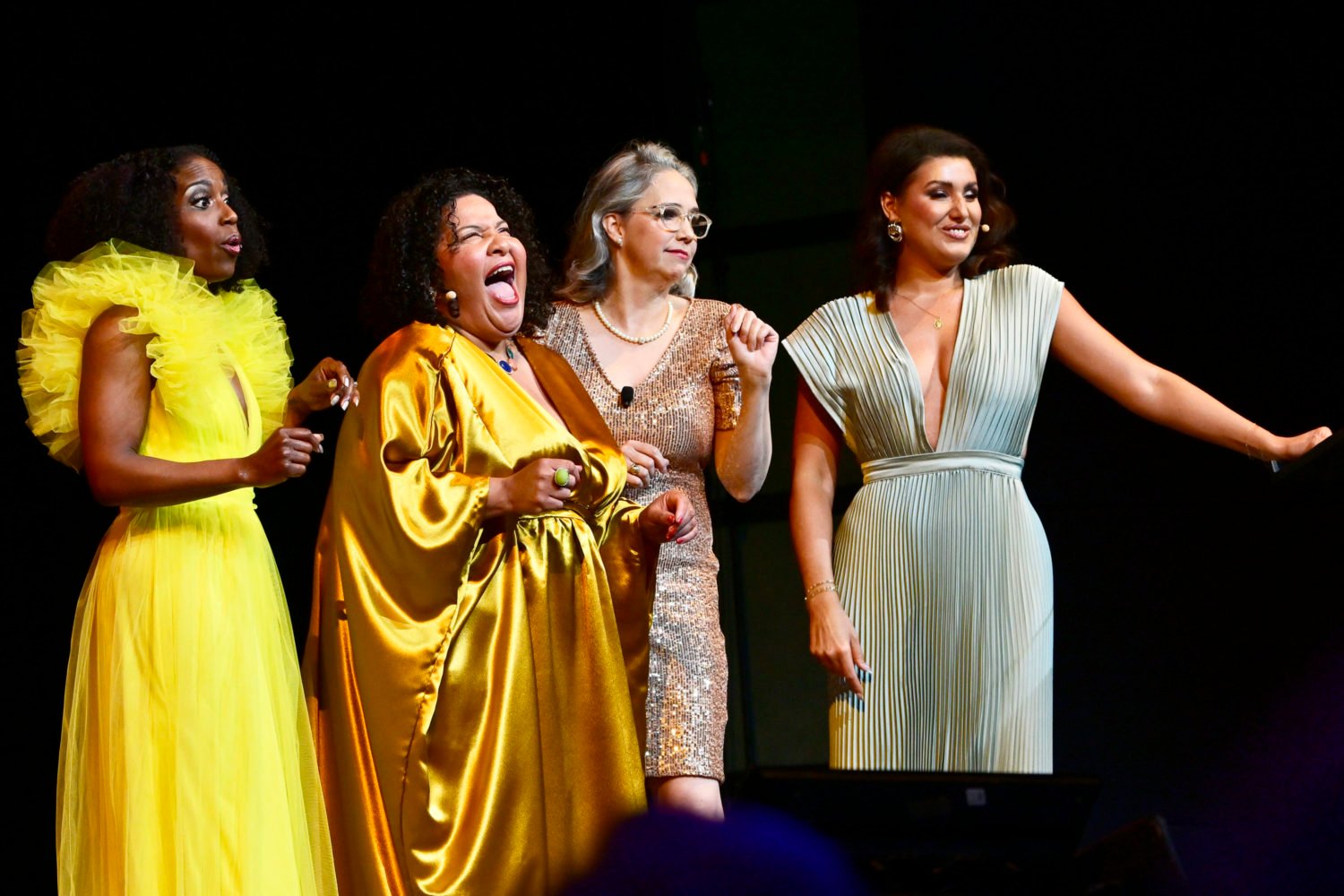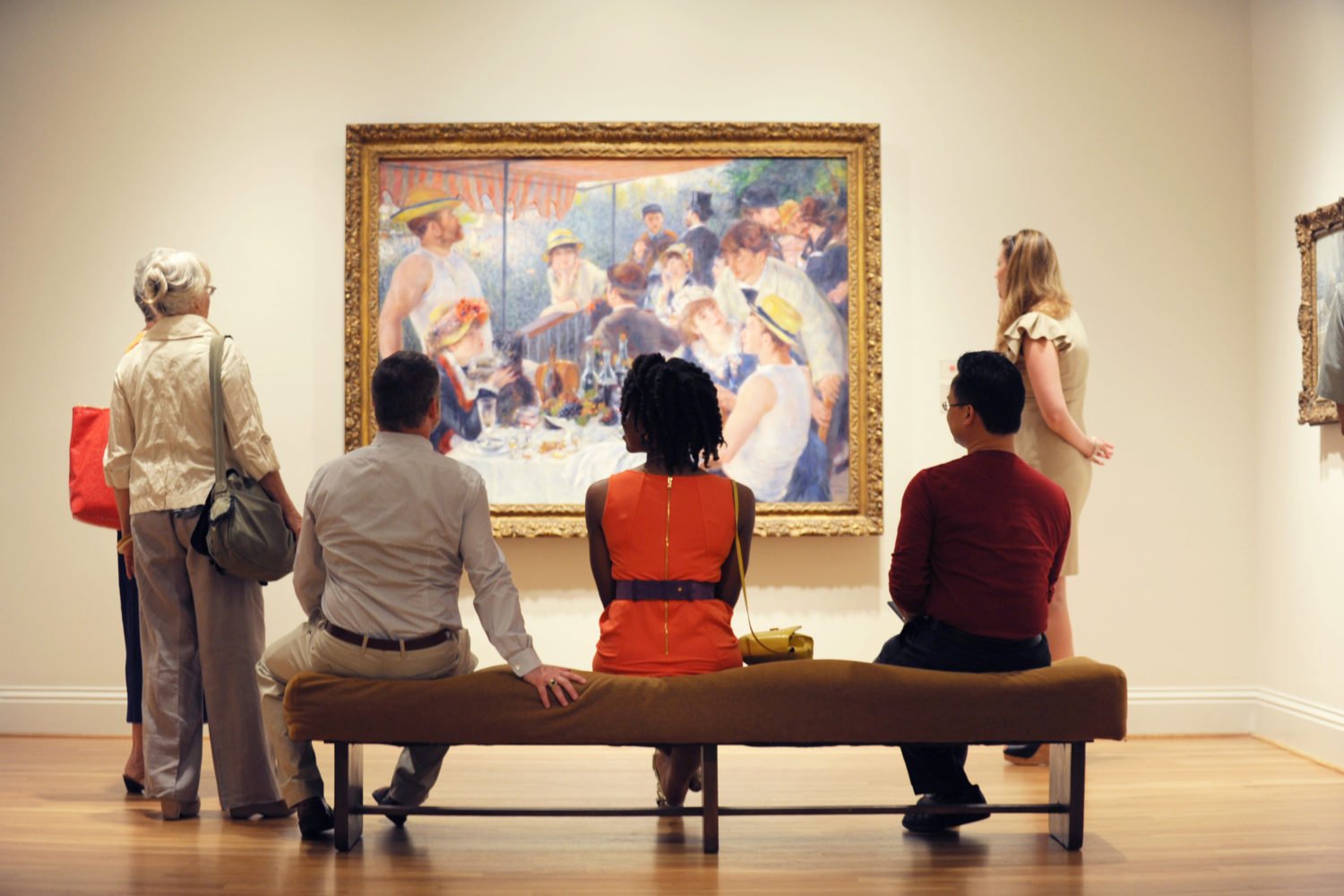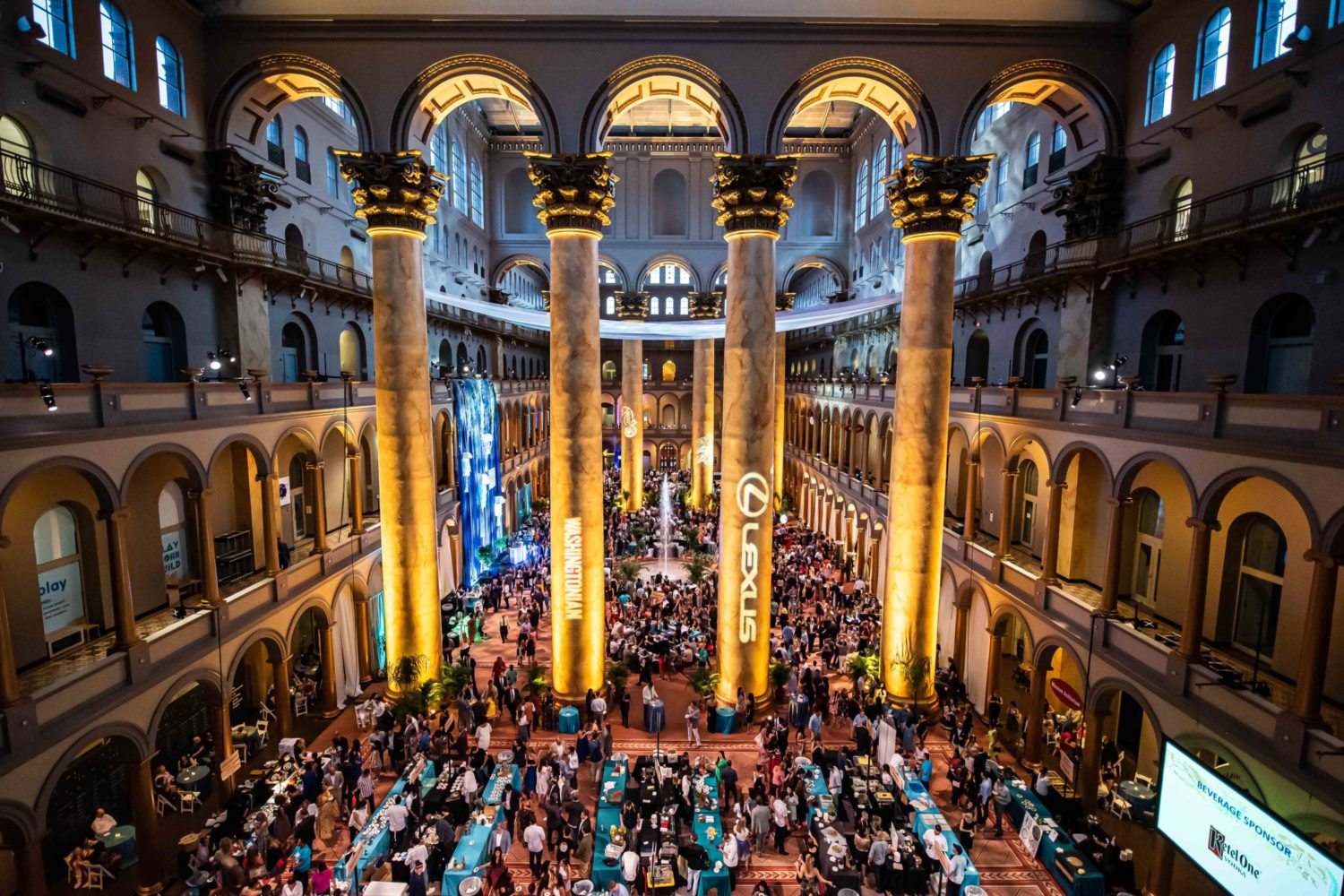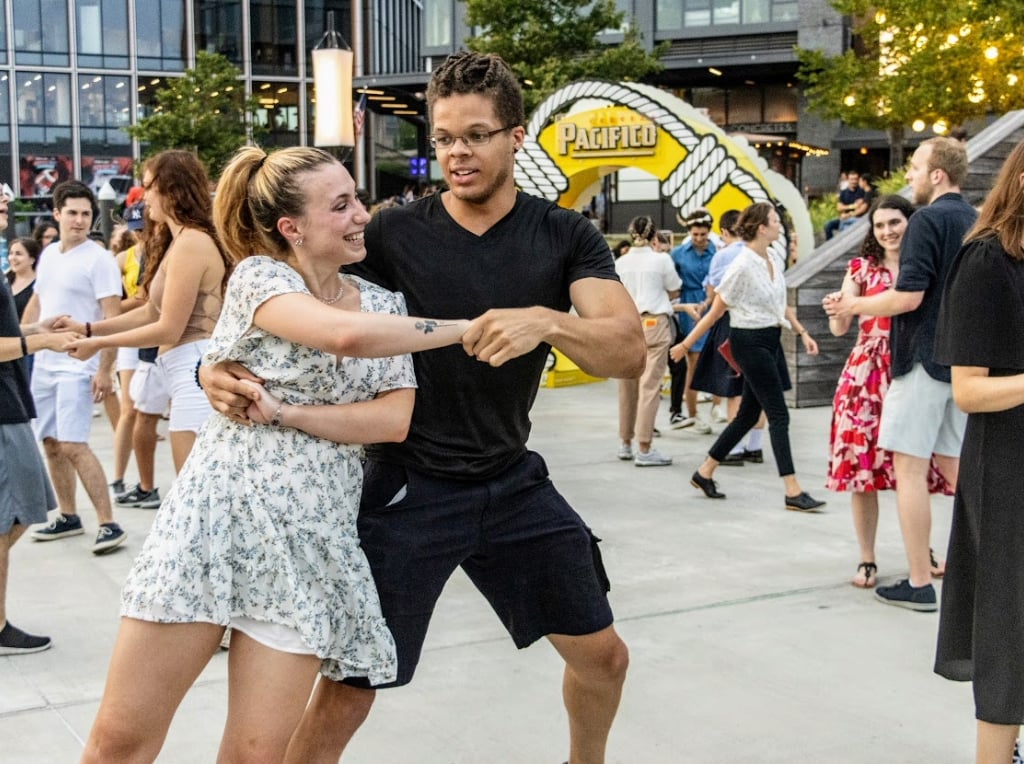The Guard, a comedic drama playing at Ford’s Theatre, explores the untold stories of great art works. Playwright Jessica Dickey imagines what would happen if a painting or sculpture could transport the viewer to its time of creation, revealing insights that died along with the artist. She explores the idea in four scenes, each unfolding in a different location and time period.
James Kronzer, an eight-time Helen Hayes Award-winning scenic designer, made this elaborate vision a reality through a series of towering set pieces positioned on a revolving stage. Between scenes, the pieces gracefully rotate and reassemble, making the play’s ambitious time-traveling premise much easier to accept. “I always get more excited when it’s more challenging and you have to try to figure it out,” he says of the design process. “You always have to find a strong way into it. The challenge is to not let the problem-solving overwhelm the storytelling.”
Dickey’s play begins in a present-day art museum equipped with white walls, right angles, Rembrandt paintings, and a bust of Homer on a pedestal. With the revolving stage effect, the museum transforms into the Dutch painter’s lush 17th-century home, scattered with art supplies and wrapped in red wallpaper. The bust of Homer remains on stage. It’s the artist’s prized possession and eventually becomes a portal into the third scene–this time in ancient Greece. Homer is alive and well in this ocher-tinted world, monologuing among the imposing columns that have suddenly appeared onstage. For the final scene, the columns recede into the dark interior of a modern home.

It’s a play about how art can foster connections across space and time, and Kronzer’s scenes all feel like part of a cohesive whole. With the exception of Rembrandt’s cluttered home, they’re simple, streamlined, and invite viewers to fill in the gaps themselves. “The audience brings their imagination into the theater. They get bored when they don’t get to participate,” Kronzer says. “There’s actually very little up there. It’s all in the maneuvering and reconfiguring of some very simple pieces, and the broad color pallet.”
That color pallet is a theme in and of itself. Dickey’s script names the scenes after the only four colors Rembrandt ever painted with–white, red, ocher, and black. Each scene is dominated by its titular color in the sets, costumes, and lights, creating the effect of a living Rembrandt painting.
Kronzer found the painter’s self-limiting approach “brilliant and intimidating” and loved using the pallet as a reference point: “I’m a big fan of rules. That’s amazing artistry. Red is for Rembrandt. It’s a bold muscular vibrant vivid color, which is exactly who he was. The colors seemed very appropriate to each scene.”
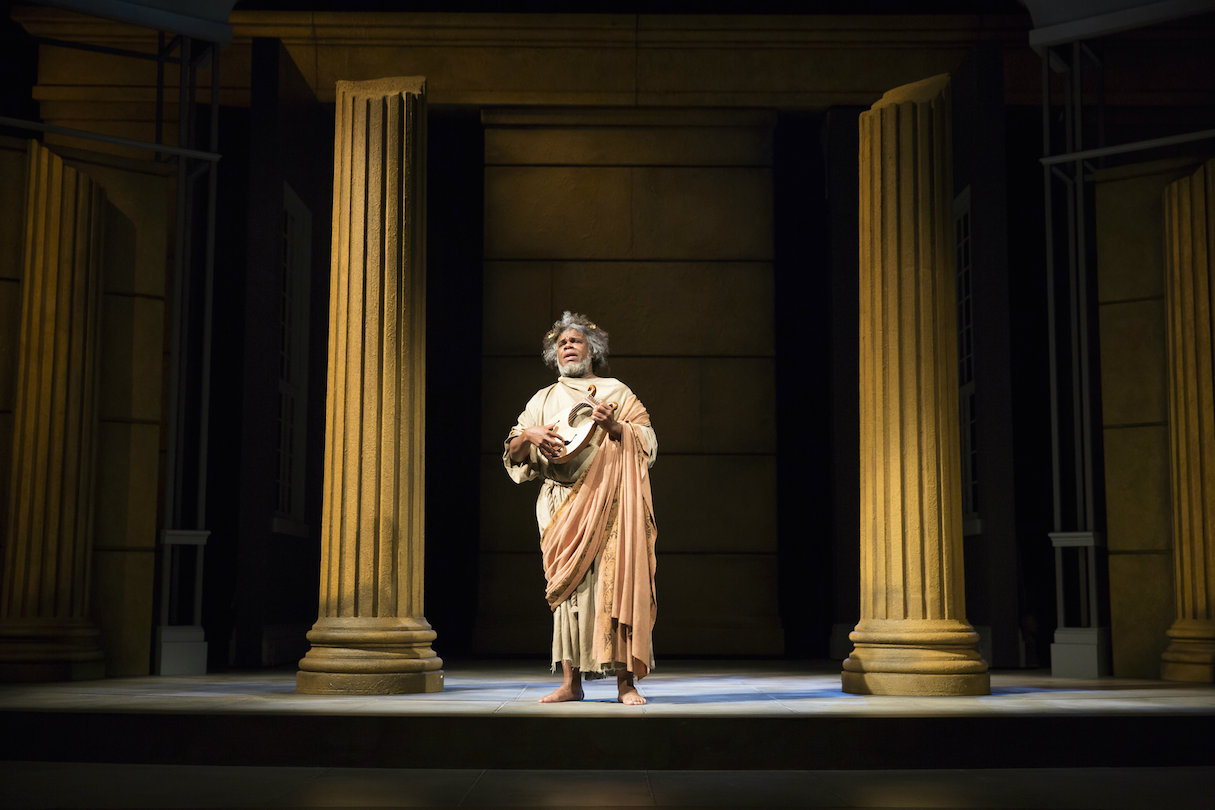
Kronzer worked closely with director Sharon Ott as well as costume designer Laree Lentz and lighting designer Rui Rita in the design. He says one of his favorite things about working in Washington, where he has been involved in theater for more than 30 years, is collaborating with people he has known for decades in a supportive environment: “I want to be in a room that’s positive and that’s going to be a place where you can take risks and be creative.”
The Guard was produced as part of the Women’s Voices Theater Festival. It runs through October 18.

